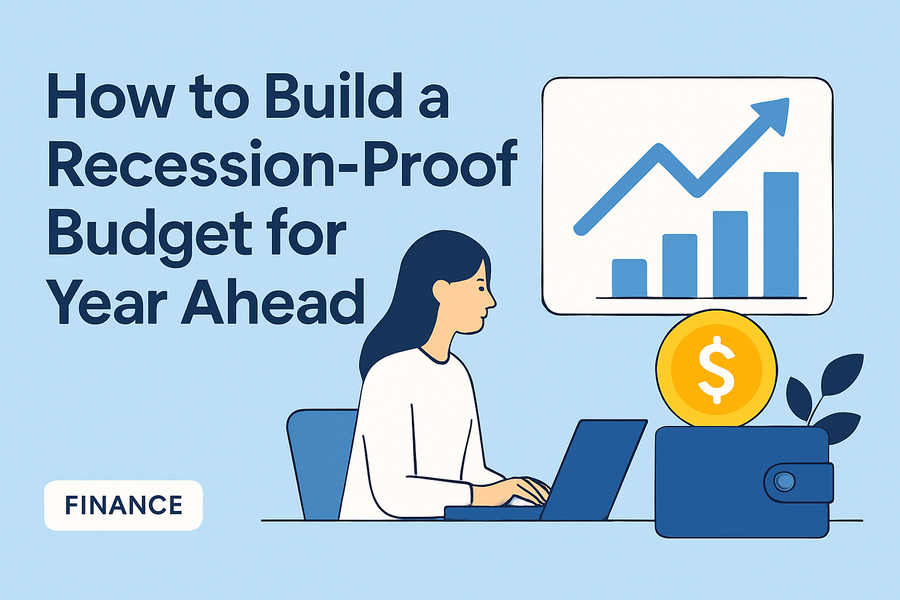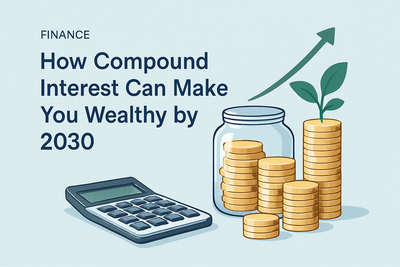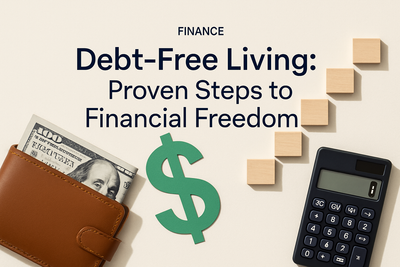
Introduction
Economic uncertainty is an inevitable part of life, and with inflation, market volatility, and global events shaking financial stability, preparing for a potential recession is more important than ever. Creating a recession-proof budget isn't about pinching every penny—it's about building resilience, prioritizing needs, and making smart choices today to protect your future.
In this post, we’ll walk through practical steps to build a budget that can withstand economic turbulence, giving you peace of mind and financial stability no matter what the future holds.
1. Assess Your Current Financial Situation
Before you can recession-proof your budget, you need a clear picture of where you stand. Start by listing all sources of income and tracking every expense. Use budgeting apps or spreadsheets to identify spending patterns and areas where you can cut back.
Action Steps:
- List monthly income from all sources.
- Track fixed (rent, utilities) and variable (groceries, entertainment) expenses.
- Identify non-essential spending you can reduce or eliminate.
2. Build or Strengthen Your Emergency Fund
An emergency fund is your financial safety net. Aim to save at least 3–6 months' worth of essential living expenses. This cushion can help you stay afloat without going into debt if you lose your job or face a sudden expense.
Tips to Grow Your Emergency Fund:
- Set up automatic transfers to a high-yield savings account.
- Use windfalls (tax refunds, bonuses) to boost savings.
- Cut discretionary spending temporarily to accelerate savings.
3. Prioritize Essential Expenses
When uncertainty looms, it's crucial to focus on essentials: housing, food, healthcare, and transportation. Review your expenses with a critical eye—what’s necessary versus nice-to-have?
Essentials to Prioritize:
- Housing (rent or mortgage)
- Utilities and insurance
- Groceries and basic household items
- Healthcare and medication
- Transportation to work or school
4. Reduce High-Interest Debt
Carrying debt during a recession can be especially risky. Focus on paying down high-interest credit card debt first while making minimum payments on other loans. Consider consolidating debt for a lower interest rate if possible.
Debt Reduction Strategies:
- Snowball method: pay off smallest balances first for motivational wins.
- Avalanche method: target highest interest rates to save more over time.
- Refinance or consolidate loans to reduce monthly payments.
5. Diversify Income Streams
Relying solely on one source of income can be risky in a recession. Consider side gigs, freelancing, online selling, or investing in skills that could lead to a higher-paying job or promotion.
Ideas for Extra Income:
- Freelance platforms (Upwork, Fiverr)
- Part-time remote jobs
- Renting out spare space or assets
- Monetizing hobbies or crafts
6. Stay Flexible and Review Monthly
Your budget should be a living document. Economic conditions can change quickly, so review your budget monthly and make adjustments as needed. Celebrate small wins to stay motivated and keep your financial goals front and center.
Checklist for Monthly Review:
- Compare actual vs. planned spending
- Adjust categories based on changes (e.g., job shift, new expense)
- Reallocate savings toward emergency fund or debt if possible
Conclusion
While we can't control the economy, we can control how we prepare for it. Building a recession-proof budget is about creating financial flexibility, reducing risks, and ensuring you can weather the storm if times get tough. Take action now, and you'll not only survive but potentially thrive through any economic downturn.
Start today—your future self will thank you.







